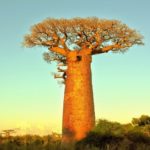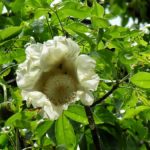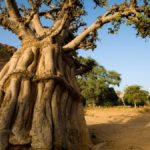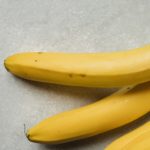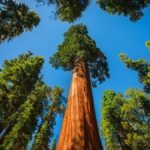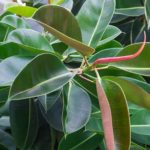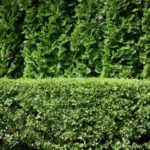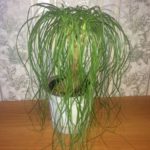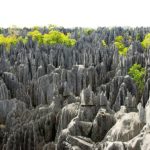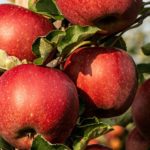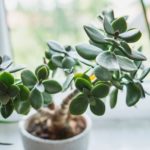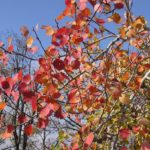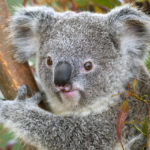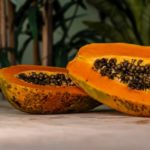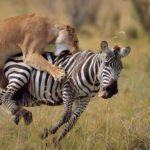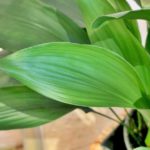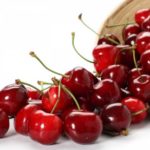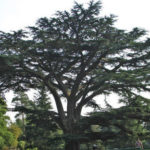Baobab
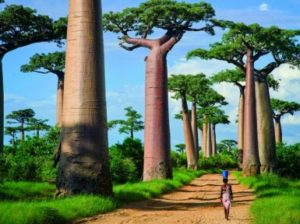 Africa has its own special plant. In Africa – Baobab is growing. Many have heard about this amazing tree. The baobab has many names: a giant crab, a huge nest, inverted carrots. Well, and its scientific name is Adansonia Palchataya from the Malvov family.
Africa has its own special plant. In Africa – Baobab is growing. Many have heard about this amazing tree. The baobab has many names: a giant crab, a huge nest, inverted carrots. Well, and its scientific name is Adansonia Palchataya from the Malvov family.
The leaves are really palmate, and they fall in the heat. If you saw the baobab, then do not confuse it with any other. The trunk of this tree is not like any other.
Baobab Description
Any continent of the earth often differs from others not only in its geographical position and geology, but also in flora and fauna. Some species of flora are, so to speak, its special feature or “calling card”. Such a hallmark of Africa is baobab.
They say that according to one African legend, an unusual type of baobab is explained by the fact that God was angry and pulled him out of the ground. Then, having calmed down, he again planted a tree in the African savannah, but at that time was scattered and therefore the roots of the baobab were up. This explains the fact that the crown of the tree has few leaves and its trunk is specific. They say that from one baobab you can draw 100 tons of water.
Baobab tree growing in dry tropical savannahs is famous for its thickness and longevity. In height, it can reach 18-25 meters, and in diameter its trunk is often up to 10 meters. Baobabs living for hundreds of years can amaze you with the fact that their trunk girth is 40 meters or more. Due to the fact that the tree has no annual rings, it is difficult to determine the age of the plant. Baobab is growing for a thousand years, and age is determined by radiocarbon analysis. The age of one such tree, which had a trunk circumference of 43.5 m, was determined to be 5500 years. It is unlikely that anything else from the plant world can boast of such longevity.
The largest tree in Africa is Sunland Baobab in South Africa. The trunk girth of this tree is more than 45 meters, and the height is almost 22 meters. Sunland Baobab is a unique tree, inside which local entrepreneurs have placed a small pub. At what, nothing had to be hollowed, because it is a natural cavity inside the trunk. The pub was built in 1933 and it is still alive, like the tree itself. Visitors who want in this pub to drink a glass of beer or something stronger, more than enough.
And in the Republic of Botswana, near the city of Kasana, the baobab hollow was used as a prison for prisoners. When you are in Zambia at the Kayila Lodge Lodge, if you feel like it, don’t be surprised that you will have to cope with such a baobab toilet
Baobab adapted to the dry period. In the heat, it immediately discards the leaves and decreases in volume. Blossom starts from October to December. Flowers up to 20 cm with 5 white petals and purple stamens on hanging pedicels. They bloom at night and attract bats that pollinate flowers with their smell. In the morning, the flowers begin to fade and fall already with a putrid odor.
The fruits are similar to melons or cucumbers, which are covered with a shaggy skin. Inside, sour mealy flesh with black seeds. More often than not, monkeys eat fruits and therefore baobab is called “monkey bread tree”. Elephants eat leaves and branches. The fruits of the baobab are also consumed by residents of local tribes.
Baobab wood is soft and full of water. Because of this, the tree often suffers from fungal diseases. Trunks are hollow. Baobab dies in its own way. The trunk crumbles and settles, then only one fiber remains. The tree can quickly recover from diseases and re-grow the bark, bloom and bear fruit, with an empty core in the trunk. Even a felled or fallen tree can take root. If one root remains in the ground, then the trunk can grow horizontally. It happens that for unknown reasons, baobab may not look quite usual, as if someone had tied it into a knot.
Types of Baobabs
Although the places of growth of baobabs are very limited, there are several varieties of baobab and all of them, although relatives, are still noticeably different from each other and grow in different places. So in Africa, two species grow: Adansonia digitata and Adansonia kilima. There are six species in Madagascar: Adansonia grandidieri, Adansonia madagascariensis, Adansonia perrieri, Adansonia rubrostipa or, in other words, Adansonia fony, Adansonia suarezensis and Adansonia za. In Australia, there is only one species – Adansonia gregori or, alternatively, Adansonia gibbosa. More about the features of these species:
Adansonia digitata
Finger-bearing adansonia is precisely the most famous and widespread African baobab. This is a large tree up to 25 m high and a trunk diameter of up to 12 m. Covered with gray smooth, sometimes bumpy bark. Of all the varieties of baobabs in Madagascar and Australia, only adansonium palmate have white hanging flowers. The fruits of this baobab come in different shapes: round, ovoid, oval. Its homeland is a semi-arid part of the Sahara desert.
Adansonia grandidieri
This is the most beautiful of the baobabs. This tree is up to 25 m tall and up to 3 m in diameter. It has an even cylindrical trunk, tapering to the top, covered with reddish-gray, smooth bark. Branches grow only in the upper part, the crown is almost horizontal. The flowers are white, with time becoming yellowish. Fruits are ovoid or round with a reddish plumage. It melts in the west of Madagascar in the areas of Murundava and Morombe. Named after Alfred Grandidier, French botanist and explorer of Madagascar. Adansonia grandidieri is a symbol of Madagascar.
Adansonia perrieri
Adansonia perrieri is a very rare type of baobab. The tree is large and medium in size, found to be about 30 m high. They have uneven crowns with thick branches growing almost horizontally or at an angle. Flowers in adansonia perrieri are yellow or yellow-orange. Fruits are large up to 30 cm in size with small seeds. It grows only in the north of Madagascar in the province of Antsiranana. It is considered an endangered species, no more than 10 places of growth of this species are known.
Adansonia kilima
Adansonia kilima or Mountain Baobab is very similar to Adansonia palmate. Outwardly it is difficult to distinguish, the difference is noticeable in the form of flowers. It was isolated in a special form after careful research due to the fact that it is a tetraploid, that is, it has 4n chromosomes in cells, unlike other diploid ones with 2n chromosomes. It grows in eastern Africa, in Namibia, in the mountains above 650 meters above sea level.
Adansonia suarezensis
Adansonia suarezensis is an endangered species, it is a tall, single-stemmed tree, up to 25 m tall and up to 2 m in diameter, tapering from the foot to the top. Branches grow almost horizontally, so the crown is flat. The flowers are white, the fruits are oblong. Seeds are the largest of all baobabs. For one kg. accounts for 450, apart from the usual 1000. It grows only in the north of Madagascar in the province of Antsiranana.
Adansonia za
Adansonia za – a tree of various heights, from 5 to 30 meters. The barrel is cylindrical or conical. Branches usually grow up. The flowers are yellow. Fruits are oblong up to 30 cm in size. More often almost black. Adansonia za is the most common type of baobab in Madagascar. It grows in the west of the island, mainly in the province of Tuliara.
Adansonia madagascariensis
Adansonia Madagascar – Baobab of various sizes and shapes with an irregular crown. Height from 5 to 20 meters. The bark is light gray. The flowers are red. Fruits are rounded about 10 cm in size. It grows in dry or semi-dry forests in the north-west of Madagascar, in the province of Mahagan.
Adansonia rubrostipa
Adansonia rubrostypa, or Adansonia fony, is the smallest species of Madagascar baobabs. The usual height of these trees is 4-5 m, but sometimes they are also up to 20 m. The trunk of this bottle-shaped. The bark is gray, with age it becomes brown, reddish. The leaves are lace, the crown is irregular. The flowers are yellow or orange. Fruits are rounded, with red plumage. It grows mainly in the province of Tuleara in the west of Madagascar.
Adansonia gregorii
Adansonia gregorii or Adansonia hibos is a stunted tree, up to 10 meters, with a bottle-shaped trunk covered with a smooth gray bark. Crohn is bezfomenny. The flowers are white or light cream in color. Fruits are round or ovoid. It grows only in the north and northwest of Australia.
The use of baobab
The local population of baobab in everyday life is fully used as shelter, food, medicine, water. Young leaves are used to make salads, soups, dry leaves become seasoning. Ground crust replaces pepper. Fruit oil is used in cooking. The flesh of the baobab fruit is rich in vitamins B and C. It tastes like ginger, and in calories it is not inferior to veal. It relieves fatigue, is well absorbed. Therefore, it is dried and ground into flour.
Breeding flour in water, they get a drink that tastes like lemonade. Because of this, some call the Baobab a “lemonade tree.” True, such a drink is not widespread in Europe and America, but exotic Cola and Pepsi from baobab are already produced in large quantities and they are in good demand. Baobab seeds can also be used in food, from a fried seed you can make a completely tolerable drink resembling coffee. And raw seeds are an effective antidote to the strophanthus, a poison that many African tribes lubricate the arrowheads with.
Baobab is very often called – “Tree Pharmacy” or “Tree of Life.” And indeed it is. It is proved that in the fruits of baobab there are a lot of amino acids, micro and macro elements, vitamins. They are superior in antioxidants to oranges, blueberries, blueberries, kiwis and apples. And in terms of vitamin C – bananas and oranges. Baobab is rich in vitamin F, A, C, group B, magnesium, phosphorus, potassium, calcium, iron, zinc, manganese, sodium, pectins, natural acids, amino acids, fiber. In ancient times, baobab is used for the treatment and prevention of a number of diseases. It is used for diarrhea, restores intestinal motility, prevents and treats dysbiosis, gastritis, improves the quality of the skin, hair and nails, uses it for allergies, normalizes stools, reduces varicose veins, prevents anorexia and anemia, treats hemorrhoids, osteoporosis, normalizes intestinal microflora, increase immunity. In recent years, in pharmacies in the US and Europe, you can buy dietary supplements and food ingredients from it. Baobab life is very popular. This new drug is increasingly used in different countries, including Russia.
Ash of the bark of a tree is used in folk medicine to treat fever, cardiovascular diseases, toothache, dysentery, asthma, colds, and insect bites. Oil is used in cosmetics, smeared externally with psoriasis, eczema and dermatitis. And flower dust has a sticky essence and glues all objects. The fruits of the plant are dried and used instead of glasses. The dry fruit is set on fire and saved by smoke from mosquitoes and other insects. The ash obtained later is used to make soap. Women wash their hair with fruit powder, and dye their hair and face with red juice from the roots. The bark gives a strong, but coarse fiber, which goes to weave fishing nets, mats, ropes or fabrics.
Inhabitants of Africa consider baobab a tree that stores the earth, gives life and fertility. No wonder this tree is depicted on the arms of the Central African Republic and Senegal. Baobab is not yet fully understood and holds many secrets.
